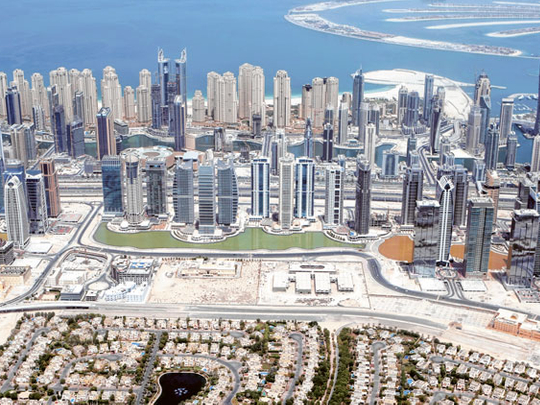
Dubai: Turning 40 is as good a time as any to take stock. In the first 30 years since the creation of the UAE, its real estate sector was creating a top-notch infrastructure and base for its citizens as well as residents from the rest of the region, the Subcontinent and beyond.
But starting in the early ‘Noughties', Dubai and later Abu Dhabi made its real estate the centrepiece of a high stakes campaign to raise the country into the global consciousness.
Acquiring property was thrown open to nationalities other than UAE citizens and Gulf Cooperation Council nationals and a raft of developments were launched — the original Palm, Dubai Marina and the Burj Khalifa — as statements of true intent. But 2009 and the global financial havoc that it spawned rearranged priorities.
In the last three years, the local real estate has been assimilating the changes that this shift meant. And it can safely be said that the next 40 (or 48) months will be as crucial as any in the past with nearly all of the supplies getting integrated into the marketplace. How well this is managed will determine the longer term prospects of real estate in the UAE.
Ryan Mahoney, CEO of Better Homes, provides an insight of what could be.
Gulf News: Dubai has long since made the conversion to a rental market. But are you now seeing more completed properties coming together into the rental marketplace in batches or is it still a trickle?
Ryan Mahoney: In the prime areas it is more of a trickle and in those areas the primary challenge agencies face in leasing is sourcing good quality, well-priced properties for rent. All agencies have a shortage of such properties. In some up and coming areas near Dubailand, there are still some communities that have large batches of properties being completed, however this will have a localised effect and will not particularly impact the demand for property in the Burj Khalifa District, JBR, Dubai Marina, Jumeirah or other prime areas.
A measure of how well a real estate market is performing is by the amount of time a property remains listed. By that yardstick, how much time are these new properties taking to get rented out?
Well-priced properties in popular areas will rent in two to three weeks. Rental yields range from about 5 to 10 per cent across Dubai depending on location and specifics of the property. Arabian Ranches yields are around 5 to 7 per cent, while Downtown and Dubai Marina are a little higher at about 7 to 10 per cent. Most areas are around 7 to 8 per cent deducting service fees and other maintenance costs.
What about rental demand — and yields — in the non-freehold locations?
In my opinion, Deira, Al Ghusais and Bur Dubai are saturated in terms of upper market property. However, there is strong demand for mid- and lower-mid property because prices are competitive and amenities in those areas are generally getting better. There is strong rental demand for both non-freehold and freehold areas of Dubai if the property is at a fair market price. Over the last two years rental prices dropped across all areas as the supply of new properties increased in freehold areas.
In recent months rental prices have risen in some prime areas such as Dubai Marina, Palm Jumeirah and Old Town while rental prices in Bur Dubai, Deira and Al Ghusais remained stable.
Demand for commercial real estate space is still on the softer side; based on your experience do you feel this is a situation likely to last for some time?
There has been an over-supply of commercial property for two to three years and demand during that same period has been weak. On the positive side, this has really reduced the cost of operating a business in Dubai. On the other hand, landlords and investors in commercial property have been hit very hard as their yields have been cut by up to 70 per cent and they have really struggled to fill their properties. But there is hope; over the last eight months demand has increased in most areas of Dubai and prices have started to stabilise in prime areas.












